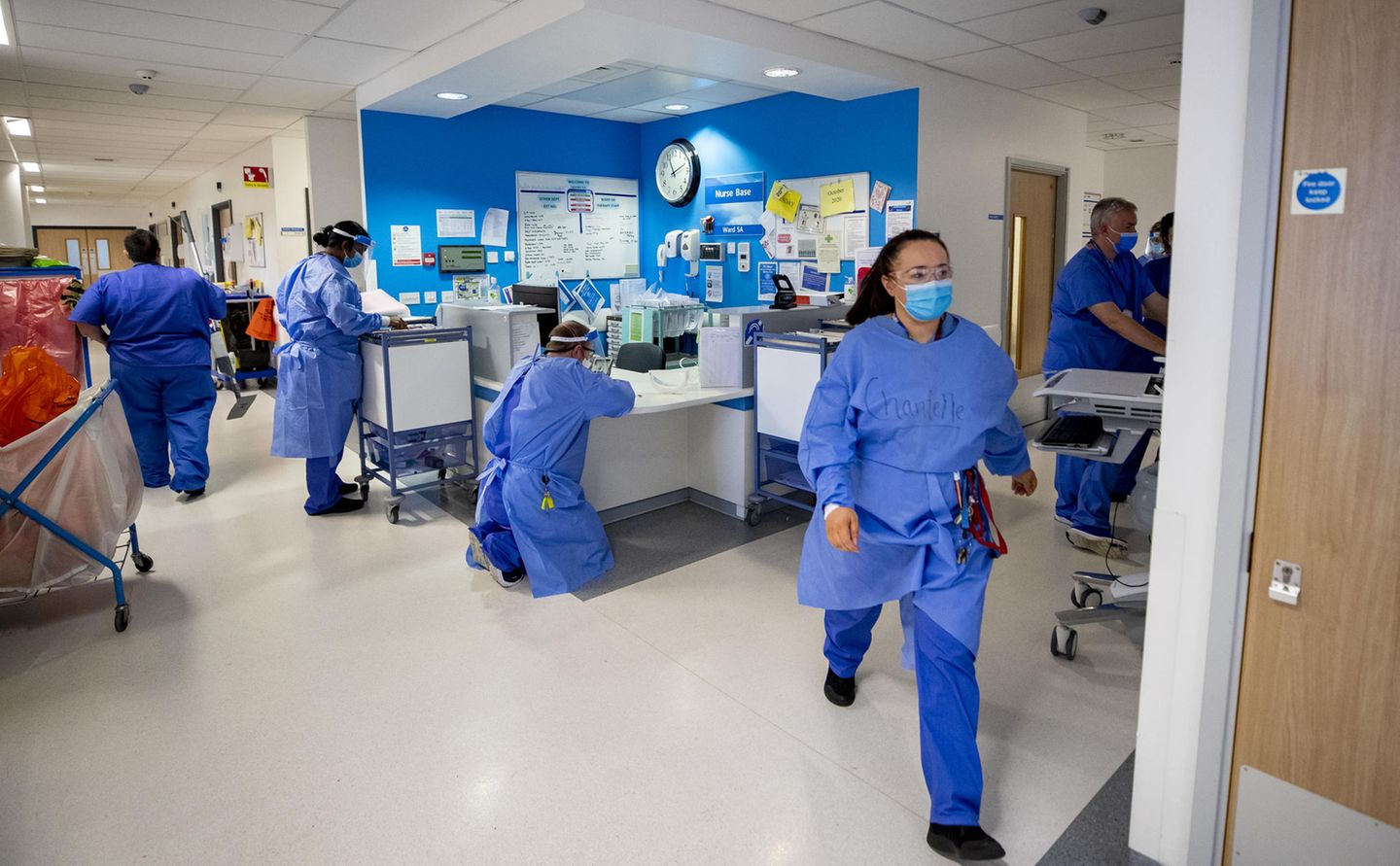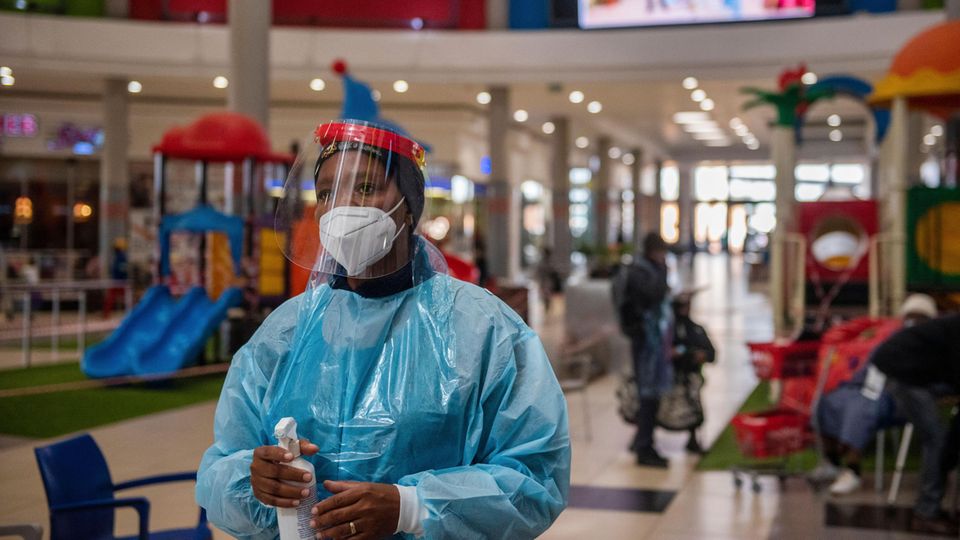
In the UK, hospitals are filling up with corona patients again. Hundreds are brought in every day. Many of them are already vaccinated. This is good news, as two model calculations show.
Great Britain is in the middle of the fourth corona wave. At peak times, the country reported 50,000 new infections daily in mid-July. Nevertheless, the British broke free, free from the mask requirement, free from distance regulations and in the clubs there is dancing again. The government argues that the high vaccination rate also allows higher incidences. It doesn’t come without a side effect. The hospitals are filling up with corona patients. Hundreds are brought in every day that. And: 40 percent of these patients are vaccinated, at least once. How can that be?
The British set the pace and they did. 70 percent of adults are now fully vaccinated, and 88 percent have at least one dose in their arms. That’s neat. After all, vaccination promises a high level of protection against serious disease and is considered to be the most important tool in the fight against the pandemic. But, as is well known, it does not offer 100 percent protection. For example, according to the approval study, the vaccine from Biontech prevents 95 percent corona diseases with original variants. According to British data, a full vaccination with Biontech / Pfizer also protects 96 percent against hospitalization for a Delta infection.
The proportion of people vaccinated in hospitals is growing
This means, on the one hand, that infections are possible despite vaccinations and, on the other hand, that the proportion of people who have been vaccinated in hospitals increases with the vaccination rate. Two model calculations by the “Financial Times” show that this is not a cause for concern, but can be interpreted positively.
If 92 percent of a million people are fully vaccinated, 80,000 are left. Based on the consideration that there is a two percent chance of getting infected with corona and developing symptoms, that would be 1600. If 10 percent develop severe courses, the result is a number of 160 patients who would have to be treated in hospital. On the other hand, there are 110 hospitalized out of the 920,000 fully vaccinated, if you factor in the effectiveness of the vaccines in terms of infection (about 80 percent) and serious illness (about 70 percent). This results in a ratio of 60/40 for a total of 270 corona patients who have to be treated in the hospital.
The second sample calculation reveals the positive influence that vaccinations have on hospital occupancy. The “FT” applied exactly the same premises, but lowered the vaccination rate to 70 percent, which led to an increase from 270 to 684 hospitalized patients. And a shift. Because the fewer fully vaccinated people are included in the bill, the fewer of them can become seriously ill. Of the 700,000 completely vaccinated, there would then be “only” 84, but a whopping 600 among those who were not yet fully immunized (88 percent). This means that as the vaccination rate increases, the proportion of people who have been vaccinated twice and who are treated in hospital increases, but the total number of seriously ill people decreases.
Unvaccinated in focus
The fact that so many fully vaccinated corona patients currently have to be treated in British hospitals is, if you take it seriously, a success of the vaccination campaign. This development is no surprise to experts. British government adviser Patrick Vallance called this development inevitable. “If every adult were vaccinated, everyone who became infected with the virus would be fully vaccinated,” the Handelsblatt quoted him as saying. If one remains true to the calculation model of the “FT”, this would mean that 120 out of a million people would have to be treated in the hospital despite a 100 percent vaccination quota. A very low value.
Prime Minister Boris Johnson wants all British adults to be vaccinated by the end of September. That will not be easy. In the group of 18 to 30 year olds alone, around three million are still not vaccinated. Johnson tries to convince her of the injection with pressure. From October onwards, only those who have been vaccinated should have access to the nightclubs. The Delta virus has recently been the most violent among the younger generation. That’s no surprise either. Experts have been warning for some time that the higher the vaccination rate, the more unvaccinated people will become infected. With regard to a fourth wave in Germany, the President of the Society for Virology, Ralf Bartenschlager, told the German Press Agency (dpa) last week: “Above all, it will affect non-immune people, the number of whom will decrease over time. “

Vaccination fatigue versus fourth wave
Over time is the keyword. Because even in Germany, millions of people are still unvaccinated, almost half are fully immunized. 61 percent received at least one primary vaccination. In this country too, vaccination fatigue is currently great. At peak times, more than 1.4 million vaccine doses were administered daily in Germany; on Monday there were only around 313,000. Only around a fifth of these vaccinations were primary vaccinations.
“In relative terms, thanks to the vaccinations, fewer sick people with the Delta variant will have a more difficult course – you can already see that in Great Britain,” said Gernot Marx, President of the German Interdisciplinary Association for Intensive Care and Emergency Medicine (Divi), to the “dpa” . “What we always have to keep in mind, however: We have not yet vaccinated many, many millions of people or have not yet completely vaccinated. If the rate of new infections is many times higher, the number of patients can be absolutely as high as in the second and third wave. ”



